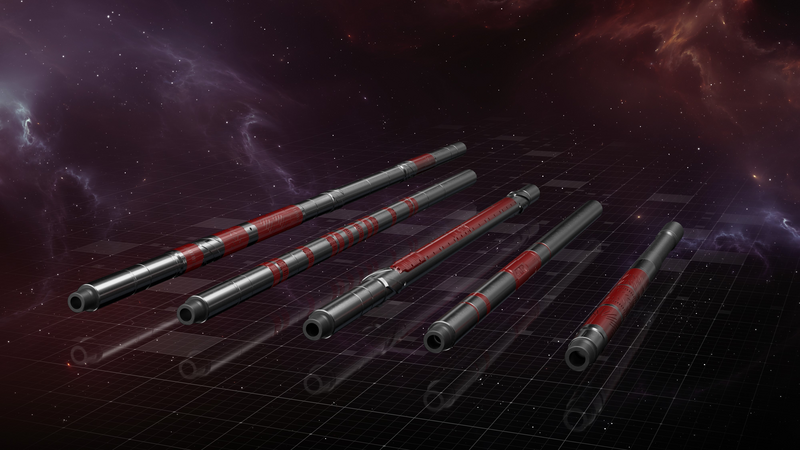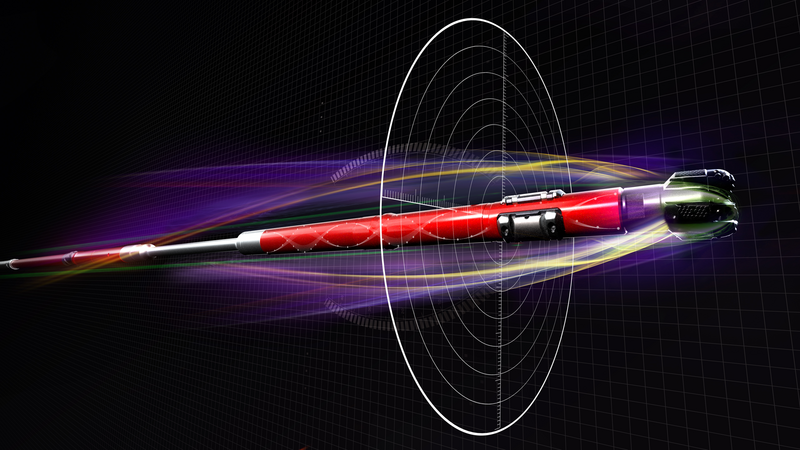 Search
Search
 Search
Search

Advanced engineering solutions deliver first-ever single run slim hole section in highly abrasive, high temperature, heterogeneous reservoir
Download PDFMature Fields

Engineer an effective solution to drill a slim-hole section in a single run.

Norway

Engineer an effective solution to drill a slim-hole section where previous six offset wells had produced:
Thorough root-cause analysis resulting in an engineered solution to optimize drilling performance:
The Åsgard oil field, discovered in 1981 and located in the Norwegian Sea, continues to present multiple reservoir drilling challenges. The highly abrasive, hard rock reservoir includes unstable and heterogenous formations, and can reach temperatures greater than 320°F (160°C). The reservoir has been drilled via slimhole for almost a decade, regularly requiring multiple trips to complete the section due to frequent downhole equipment failures—both electrical and mechanical.
Halliburton joined a One Team effort alongside Equinor ASA petroleum company, the drilling contractor, and other contributing companies to meet three main goals: 1) investigate the root cause of problems encountered in this field, 2) engineer a comprehensive solution to deliver a cost-effective, failure-free borehole, and 3) drive continuous improvement throughout the operations.
Using the Halliburton advanced software technologies suite, a team of Drilling Technical Advisors analyzed detailed offset well data to identify dynamic borehole dysfunctions and evaluate design changes to improve drilling performance. The analysis provided new insight into the causes of previous well issues, which generated a series of design improvements for two new wells. The designs significantly reduced flat time (time spent tripping or BHA handling) and ultimately delivered the first-ever one-run slimhole section in the field. The successes provided a sustainable blueprint for future wells.
The geology of Åsgard Field consists of hard rock up to 35 ksi (240 MPa) UCS with heterogeneous abrasive sandstones and interbedded shale and siltstone. Static temperatures are generally between 280°F (140°C) and 329°F (165°C). The temperatures do not account for bottomhole assembly friction. Anticipated high collapse loads necessitate a heavy liner, meaning limited annular space leading to difficulties in drilling out the shoe track.
Six offset wells, spanning eight years and three different service companies, experienced 19 BHA failures in 27 runs, resulting in around 1,400 hours of flat time. This incurred an approximate spread cost of USD 50M. Limited understanding of the causes made it necessary to investigate the past failures and find a repeatable, efficient solution. The One Team collaborative approach captured learnings from offset wells, and then implemented improvements across two wells.
single-run slim hole section
Reduction in flat time
speed running lower completion
For the first well, a customized bit with premium machete cutters was selected. The BHA was ruggedized with HF5000 carbide hard facing material at key stabilization points to resist abrasive rocks. The INSITE® software was utilized to review drilling mechanics logs and memory traces pulled from downhole tools. Torsional resonance (HFTO) was identified as the dominant vibration mechanism and procedures were developed to mitigate and control it such as the active management of weight-on-bit (WOB) to constrain torsional response. Identifying the system limits and respecting them helped establish a viable baseline and increase understanding of the available operating envelope. To overcome the drill-out challenges, a rotary bottom hole assembly was configured, laying the necessary groundwork for proof of concept. The DrillDOC® downhole drilling dynamics service was employed to accurately manage WOB. A bit trip was performed when the Applied Drilling Technology (ADT®) drilling optimization team determined that it was needed. The first well was successfully drilled without any tool failures.
Having defined the limits of the drilling envelope and gathered crucial data from surface and downhole during operations for the first well, the task for the second well was to engineer a system capable of improving efficiencies, including eliminating the dedicated drill-out run. The One Team proposed technological improvements to the bottom hole assembly to further improve drilling performance. Based on a geometrical analysis of the liner and drillstring, a 4-3/4 in. iCruise® rotary steerable system (RSS) configured for a 5-7/8 in. hole was proposed to handle anticipated heat and high-frequency torsional oscillations. In a first for Norway, the 4-3/4 in. iStar™ intelligent drilling and logging platform was introduced. The BHA included the BaseStar® service, with the integrated PixStar® service technology, to provide crucial borehole caliper, downhole WOB, and torque-on-bit (TOB) measurements necessary for real-time understanding of the downhole conditions. The SPARTA™ rock mechanics analysis service corrected for pore pressure variations on logs from the first well to accurately define rock compressive strength. This analysis led to the engineering of customized HDBS bit designs that use specialized Machete™ cutters and enhanced gauges. Custom drill-out guidelines were established to manage the BHA condition. Higher flow rates were utilized in open hole for efficient hole cleaning and cooling of the bit face to improve durability.
Using the conclusions from the One Team investigation efforts, and the knowledge gained from the first well, the second well delivery was optimized to deliver the first ever one-run slim-hole section ever in the Åsgard field. The unique combination of iCruise RSS, iStar platform, and HDBS drill bit technology, and the optimized drilling guidelines resulted in a greatly improved vibration signature. The proactive drilling optimization strategy mitigated the risks of exceeding system limitations while keeping progress at the technical limits. The strategy was based around increasing the drilling parameters in a staged manner until the system foundered. The input parameters were then reduced to just below this technical limit where the founder point was tested on a periodic basis. Flat time was reduced by 56% (to 102 hrs) on the first well; and by 76% on the second well, from an average of 232 hrs per well to just 55 hrs. The custom HDBS bit design and real-time BaseStar data enabled a 53% net ROP improvement over the previous well by transmitting accurate weight and torque data from just above the rotary steerable system on the second-longest, failure-free run in the field. The superior borehole quality delivered by the iCruise RSS meant that a smooth lateral bore remained comfortably within the 89-90° hardlines requested by the operator’s petro-technical team and resulted in a swift completion run and beating the perfect well time. To conclude, a new chapter has been written in well performance in the Åsgard field; from drilling performance to lower completion running times. A well-engineered and systematic workflow utilizing process, analytics, and technology allowed for continuous improvement in performance. This highly collaborative and integrated approach is another example that showcases Halliburton’s commitment to collaborate as One Team to engineer drilling solutions and reservoir insight to maximize asset value to customers.
iStar™ Intelligent Drilling and Logging Platform
Critical real-time measurements for well placement, drilling optimization, and borehole quality

Fully digital and web-enabled to monitor and control drilling and logging operations from anywhere.

Reduce well time through fast drilling, fast tripping time and quicker casing drill outs.

Increase the consistency and performance of well construction operations by integrating subsurface automation, digital twins, and remote operations.
